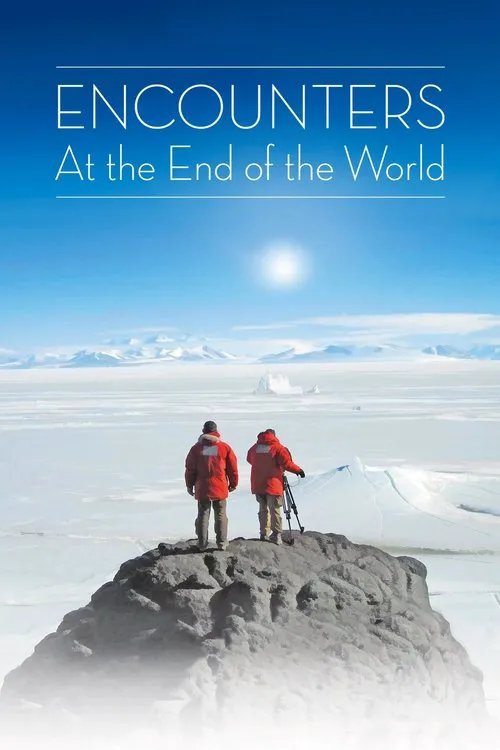Encounters at the End of the World

Plot
In "Encounters at the End of the World," Werner Herzog embarks on a cinematic journey to the frozen continent of Antarctica, an unforgiving and unyielding environment that has captivated human imagination for centuries. Joined by his longtime cinematographer Peter Zeitlinger, Herzog travels to the southernmost point on Earth, a realm where the laws of nature appear to be inverted, and the very fabric of existence is pushed to the extreme. The film begins with Herzog's characteristic deadpan narration, warning viewers that they are in for a cinematic experience that defies the conventional expectations of a traditional Antarctica film. Instead of showcasing the cute, fluffy penguins that often feature in such documentaries, Herzog and Zeitlinger set out to capture the essence of humanity's encounter with the continent's eerie landscape. As they traverse the frozen expanse, the duo encounters a diverse cast of individuals who call Antarctica home, if only temporarily. Among those they meet are scientists, researchers, and support staff from various countries, each bringing their unique perspective and passion to their work in this unforgiving environment. There's Bernd, a German glaciologist who has spent decades studying the continent's ice sheets; Jim, an American cook who has been stationed in Antarctica for over a decade; and Lisa, a young Australian field assistant who has just arrived at the research station, brimming with excitement and curiosity. As Herzog engages in conversations with these individuals, he delves into their thoughts, dreams, and motivations for being in this remote and inhospitable region. He discovers that despite the harsh conditions, many of them have formed strong bonds with their colleagues and developed a deep appreciation for the beauty and majesty of Antarctica. There's a recurring theme of isolation and disconnection, however, as many of the researchers struggle to reconcile their work with the demands of their personal lives. Throughout the film, Herzog's narration weaves a rich tapestry of philosophical and existential musings, often meandering into the realms of metaphysics and the human condition. He wonders aloud about the purpose of human existence, and whether our endeavors in Antarctica, with all their scientific precision and technological advancement, amount to more than simply scratching the surface of the planet's secrets. As the crew ventures deeper into the continent, they capture breathtaking footage of Antarctica's surreal landscapes: towering glaciers, shimmering snowfields, and crystal-clear ice caves. Zeitlinger's cinematography is breathtaking, capturing the ever-changing light and shadows that dance across the landscape, imbuing the viewer with a sense of wonder and awe. Herzog's fascination with the continent's human and natural environments leads him to ponder the very fabric of reality. He notes that in Antarctica, "something of the world's original texture is still palpable," echoing his long-held fascination with the mysterious and the unknown. As he traverses this unforgiving realm, he finds himself drawn into a meditative state, one that blurs the lines between observer and participant, and challenges the viewer to reexamine their own place within the grand scheme of existence. One of the most striking aspects of "Encounters at the End of the World" is its refusal to provide easy answers or solutions to the mysteries it presents. Instead, Herzog and Zeitlinger engage in a profound exercise of observation, allowing the viewer to absorb the beauty, the terror, and the sheer otherness of Antarctica in all its complexity. It's a cinematic experience that defies easy categorization, existing somewhere between a documentary and a poetic meditation, a journey into the heart of the unknown that lingers long after the credits roll.
Reviews
Recommendations




